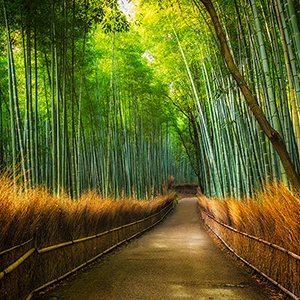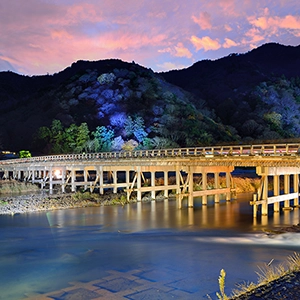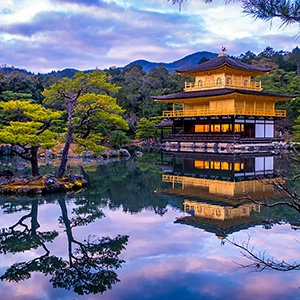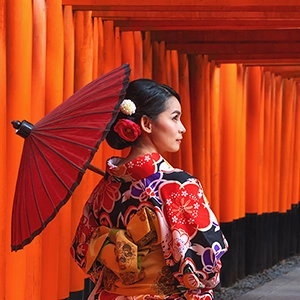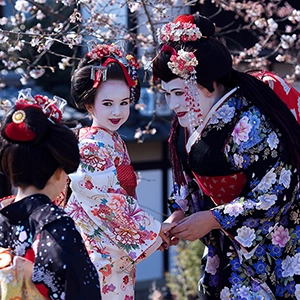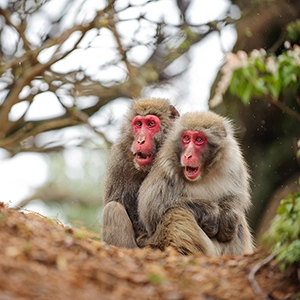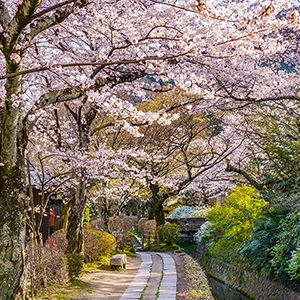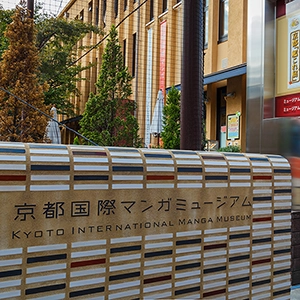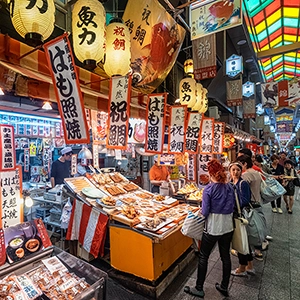Take In The Beauty And History Of Nijo Castle
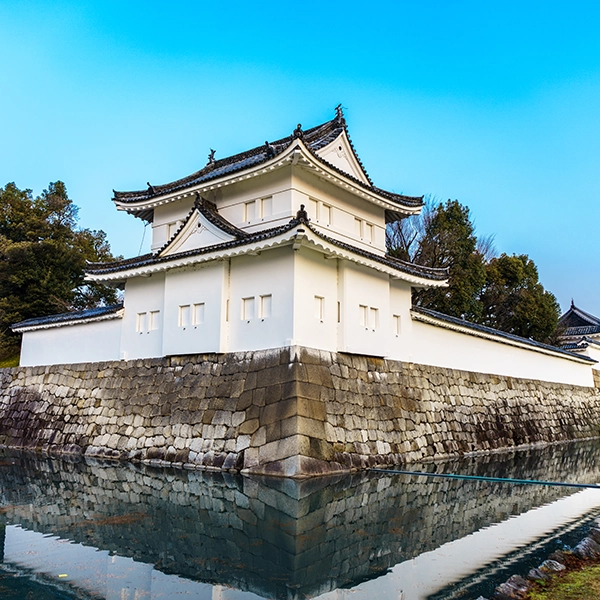
Nijo Castle, located in the historic city of Kyoto, is a magnificent example of Japanese feudal architecture and a symbol of the power and authority of the Tokugawa Shogunate, which ruled Japan from 1603 to 1867. The castle, designated as a UNESCO World Heritage Site, features beautifully decorated buildings, lush gardens, and impressive fortifications, offering visitors a glimpse into the opulence and grandeur of Japan's feudal era. Explore Nijo Castle, including its history, features, and significance, as well as find practical information for your visit to this fascinating destination.
The History of Nijo Castle
Construction of Nijo Castle began in 1601 under the orders of Tokugawa Ieyasu, the founder of the Tokugawa Shogunate, who sought to establish a lavish and formidable residence in Kyoto to demonstrate his power and prestige. Completed in 1626, Nijo Castle served as the official residence of the Tokugawa Shoguns when they visited Kyoto, as well as a venue for hosting important ceremonies and events. The castle's most famous historical event occurred in 1867, when the last Tokugawa Shogun, Tokugawa Yoshinobu, officially returned political power to the Japanese Emperor, marking the end of the feudal era and the beginning of the Meiji Restoration.
Exploring the Castle Grounds
Nijo Castle is divided into two main areas: the Honmaru (inner citadel) and the Ninomaru (outer citadel). Both areas are surrounded by moats and fortified walls, which were designed to deter potential attackers and provide a sense of security for the castle's inhabitants. Visitors can enter the castle grounds through the imposing Karamon Gate, which is adorned with intricate carvings and gold leaf decorations.
The Ninomaru Palace
The main attraction of Nijo Castle is the Ninomaru Palace, a stunning example of Momoyama architecture that served as the primary residence and reception area for the Tokugawa Shoguns. The palace is comprised of several interconnected buildings, including the Tozamurai, Shikidai, Kuroshoin, and Shiroshoin, which are arranged around a central courtyard. The interiors of these buildings are lavishly decorated with exquisite paintings, ornate wood carvings, and gold leaf details, reflecting the wealth and status of the Tokugawa Shogunate.
One of the most distinctive features of the Ninomaru Palace is its "nightingale floors," which were designed to produce a chirping sound when walked upon, alerting the castle's inhabitants to the presence of intruders. The palace also features several rooms with hidden compartments and secret passages, which allowed the Shogun's bodyguards to keep a watchful eye on visitors and quickly respond to any threats.
The Honmaru Palace
While the Honmaru Palace is not as grand or well-preserved as the Ninomaru Palace, it still offers a fascinating insight into the daily life and activities of the Tokugawa Shogunate. The Honmaru Palace was originally a secondary residence for the Shogun and his family, and later served as the home of the Emperor Meiji during his brief stay in Kyoto. Today, the palace is open to the public on a limited basis and houses a small museum displaying artifacts and items related to the history of Nijo Castle and the Tokugawa Shogunate.
The Castle Gardens
Surrounding the palaces of Nijo Castle are beautifully landscaped gardens that provide a serene and tranquil setting for visitors to enjoy. The Ninomaru Garden, designed by the renowned landscape architect Kobori Enshu, features a large pond, ornamental stones, and meticulously pruned pine trees, creating a harmonious and elegant atmosphere. The Honmaru Garden, which was originally the site of the castle's main keep (now dismantled), offers panoramic views of the castle grounds and the surrounding cityscape from its elevated position.
Visitors can also explore the Seiryu-en Garden, a more recent addition to the castle grounds that was designed in the 20th century. This garden features a blend of traditional Japanese and Western-style landscaping, providing a unique and interesting contrast to the other gardens within Nijo Castle.
Visiting Nijo Castle
Nijo Castle is open to the public year-round, with the exception of certain holidays and maintenance periods. The castle's hours of operation are typically from 8:45 AM to 5:00 PM, with the last entry allowed at 4:00 PM. There is an admission fee to enter the castle grounds, which includes access to the Ninomaru Palace, Honmaru Palace, and the castle gardens.
Visitors are advised to dress modestly and wear comfortable footwear, as the castle grounds are quite expansive and feature a variety of walking paths and stairs. Photography is generally permitted within the castle grounds and gardens, but may be restricted in certain areas or during special events. Additionally, visitors should be aware that the interiors of the Ninomaru and Honmaru Palaces require the removal of shoes, so it is recommended to wear socks or bring a pair to wear during your visit.
Getting to Nijo Castle
Nijo Castle is easily accessible from central Kyoto and can be reached by subway, bus, or taxi. The most convenient option is to take the Kyoto City Subway Tozai Line to Nijojo-mae Station, which is just a short walk from the castle entrance. Alternatively, you can take the Kyoto City Bus to the "Nijojo-mae" bus stop, which is also within walking distance of the castle. Taxis are another option for those who prefer a more direct and comfortable mode of transportation.
Nearby Attractions
Nijo Castle's central location in Kyoto makes it an ideal starting point for exploring the city's many cultural and historical attractions. Nearby sites of interest include the Kyoto International Manga Museum, the Kyoto Imperial Palace, and the vibrant shopping districts of Teramachi Street and Nishiki Market. Additionally, the castle is within easy reach of several other renowned Kyoto landmarks, such as Kinkaku-ji (Golden Pavilion), Kiyomizu-dera Temple, and Fushimi Inari Shrine.
Final Thoughts
Nijo Castle is an exceptional destination that offers visitors a unique and immersive experience of Japan's feudal history and architectural splendor. The castle's magnificent palaces, exquisite gardens, and impressive fortifications provide a vivid testament to the power and prestige of the Tokugawa Shogunate, and invite visitors to explore and appreciate the rich cultural heritage of this remarkable period in Japanese history. Whether you are a history enthusiast, an architecture aficionado, or simply seeking to experience the beauty and charm of Kyoto, a visit to Nijo Castle is sure to be an unforgettable and enriching experience.

